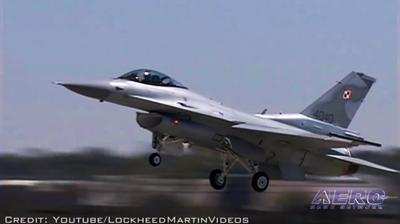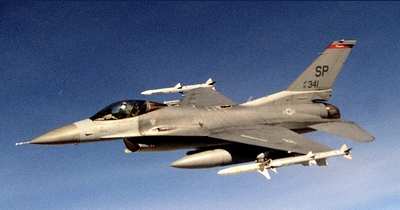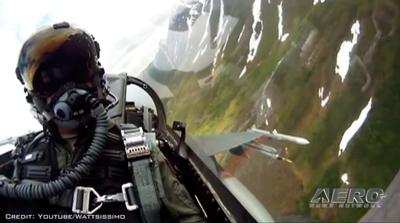Suit Alleges Parts Counterfeiting & USAF Coverup
First Lt. David Schmitz, an F-16 pilot at South Carolina’s Shaw Air Force Base, died 30 June 2020, when his ejection seat malfunctioned as he tried to punch-out during a failed nighttime landing. He was 32. An Air Force investigation of the incident revealed that key components of the ejection seat may have been counterfeit.

Upon activation, the F-16’s ejection mechanism—in accordance with its design specifications—propelled Schmitz approximately 130-feet into the air. Regrettably, components within the seat failed to deploy the system’s parachute. Seven seconds later, still strapped to the seat, Lt. Schmitz impacted the ground—dying on impact.
In the months following his death, an official USAF inquiry discovered the electronics inside Schmitz’s ejection seat were scratched, unevenly sanded, and showed otherwise shoddy craftsmanship. The findings raised questions of parts counterfeiting—which the Air Force obfuscated in a non-public section of its accident investigation report.
The antecedent details came to light in a federal lawsuit filed by Lt. Schmitz’s widow, who is suing three U.S. defense contractors for negligence and misrepresentation of their products’ safety.
Plaintiff attorney Jim Brauchle states: “What the military does is inherently dangerous to begin with. If you’re going to be engaging in that kind of activity, you want to be doing it with equipment that’s going to work.”
The case—which is before South Carolina’s U.S. District Court—targets F-16 manufacturer Lockheed Martin; Collins Aerospace, which builds the ACES II ejection seat installed on planes across the Air Force; and multiple business units of Teledyne Technologies, which makes the seat’s digital recovery sequencer—the component to which Lt. Schmitz’s death is attributed.
The November 2020 public version of the Air Force’s official accident report blamed the mishap on Schmitz, alleging he mishandled his descent into Shaw. The service also implicated another serviceman who suggested Schmitz try a tail-hook landing rather than ejecting earlier.

Counselor Brauchle argues the Air Force report endeavors to disingenuously blame Lt. Schmitz for his own death, as opposed to acknowledging the ejection seat malfunctioned—as evinced by the incontrovertible absence of a parachute canopy and a living pilot.
“What ultimately killed him was the ejection seat failure,” Brauchle asserted. “It has only one job, and that’s to get the pilot out and to get out a [parachute].”
According to Air Force Research Laboratory records secured by Mrs. Schmitz’s legal team, the service suspected several transistors and microchips within Schmitz’s ejection seat’s sequencer were counterfeit. Six of the transistors lacked conformal coating; had arcing scratch marks; were heavily gouged, demonstrably obsolete, and previously suspected of being counterfeit. One capacitor among the examined electronic components was found to be partially dislodged.
Suppliers Atmel, Analog Devices, and Siliconix provided the ostensibly counterfeit transistors, memory chips and accelerometer chip, according to the USAF Research Laboratory—which also noted that Teledyne appeared to have replaced five microchips on the sequencer before submitting it for USAF inspection, thereby willfully destroying damning evidence of its own malfeasance or nonfeasance.
The widow Schmitz and her lawyers hope to learn through the legal discovery process whether the aforementioned components were proven counterfeit and the information concealed by the USAF. The plaintiffs also question whether the Air Force had met its own standards of reliability insomuch as the USAF Safety Center recommended in 2012 that sequencers of the type suspected to have failed in Lt. Schmitz’s ejection seat be replaced with more reliable hardware. Delays in replacing subject sequencers resulted in the Air Force continuing to use them longer than intended—long enough, in fact, for the specimen in Schmitz’s F-16 to fail.
In point of fact, Schmitz’s seat—owing to an acknowledged shortage of spare parts—had not been serviced in three-years. Notwithstanding implicit knowledge that doing so could result in fatality, the Air Force neglected to adequately maintain the ejection seats in its aircraft—so reported Military.com.
Mrs. Schmitz’s complaint accuses Lockheed Martin; Collins Aerospace, and Teledyne Technologies of wrongful death, accident liability, misrepresentation of the ejection seat’s airworthiness, negligent supervision [on Lockheed’s part], failure to warn the F-16 community and the public about the ejection seat’s flaws, and violation of South Carolina law. The USAF is not named as a defendant in the case on account of its being protected by the Feres Doctrine, which blocks active duty troops from bringing lawsuits against the military for [most] damages incurred as a result of service therein.
Brauchle indicated a favorable verdict would offer Mrs. Schmitz a degree of closure after losing her husband, her support network of military friends, and the Air Force’s backing. “‘Here’s your [life insurance payment], here’s your out-brief, see you later,’” Brauchle said of the Air Force’s response.

Brauchle reports the Air Force has stonewalled further requests for information due to an alleged federal law enforcement probe. In response to a recent request for information germane to the case, Roxanne Jensen, head of OSI’s FOIA branch, advised Brauchle in writing: “Any responsive documents to your request are not releasable to you at this time … Your request has been closed.”
The Air Force, Lockheed Martin, Collins, and Teledyne have collectively declined to comment on the case, Lt. Schmitz’s death, or any matters pursuant thereto. The defendants are, however, required to file a rebuttal in court by the end of September 2022.
Congress, following Lt. Schmitz’s death, passed a law requiring the United States Air Force and Navy to provide updates on their aircrafts’ ejection seats twice yearly.
 ANN's Daily Aero-Linx (12.03.25)
ANN's Daily Aero-Linx (12.03.25) ANN's Daily Aero-Term (12.03.25): CrewMember (UAS)
ANN's Daily Aero-Term (12.03.25): CrewMember (UAS) NTSB Prelim: Maule M-7-235A
NTSB Prelim: Maule M-7-235A Airborne-Flight Training 12.04.25: Ldg Fee Danger, Av Mental Health, PC-7 MKX
Airborne-Flight Training 12.04.25: Ldg Fee Danger, Av Mental Health, PC-7 MKX Aero-News: Quote of the Day (12.04.25)
Aero-News: Quote of the Day (12.04.25)





